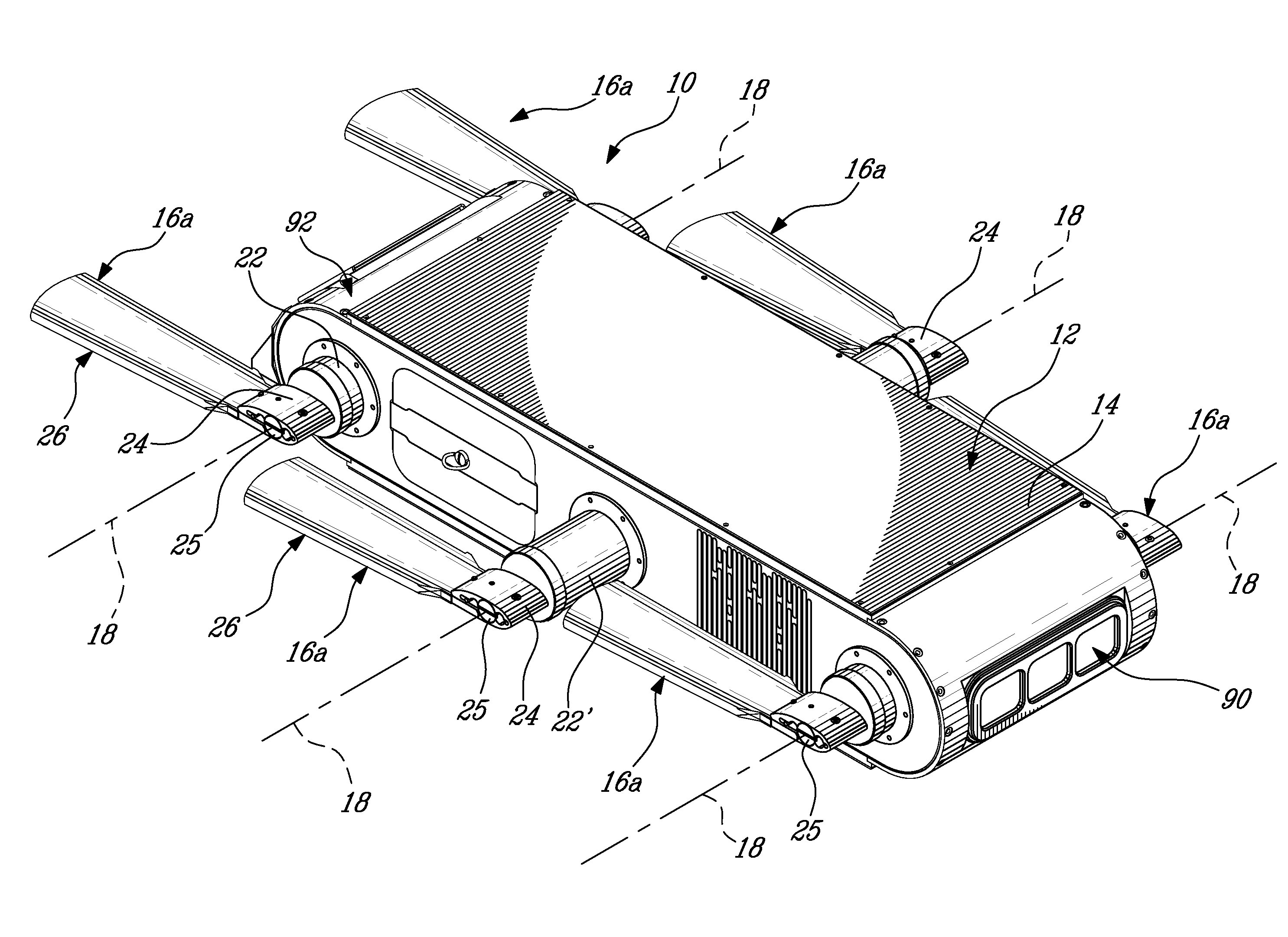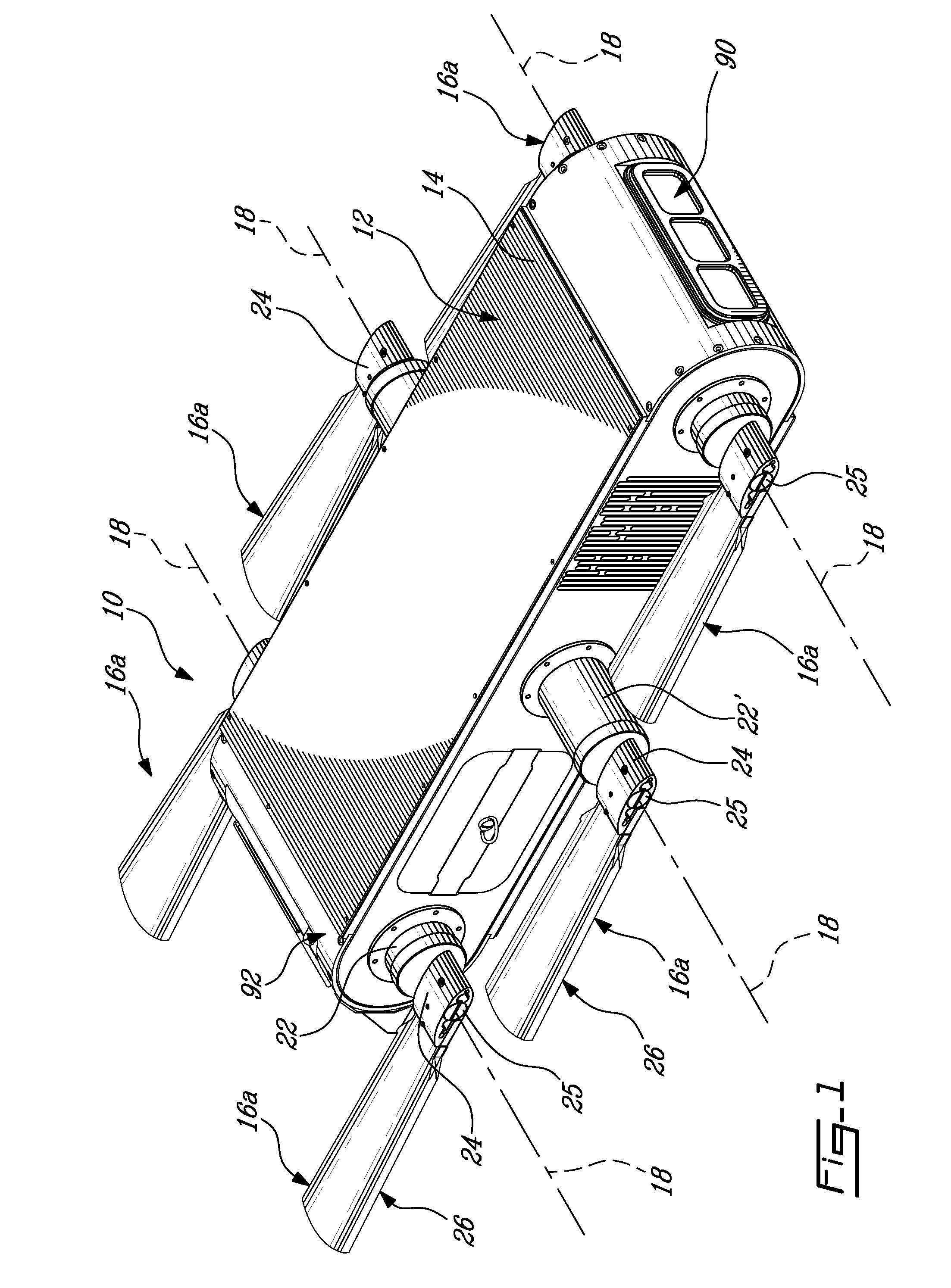Amphibious robotic device
a robotic device and amphibious technology, applied in the field of amphibious robotic devices, can solve the problems of affecting the maintenance and affecting the operation of the pose on land, and achieving the computationally straightforward task of posing maintenance a lot more difficul
- Summary
- Abstract
- Description
- Claims
- Application Information
AI Technical Summary
Benefits of technology
Problems solved by technology
Method used
Image
Examples
Embodiment Construction
[0029]Referring to FIGS. 1-2, a robotic device in accordance with a particular embodiment of the present invention is generally shown at 10. The device 10 is designed as an aquatic swimming robot that is also capable of operating on a solid medium, including compact ground surfaces and sand. As such, the device 10 is said to be amphibious in that it can walk on a solid surface and penetrate a neighboring liquid medium, swim in that liquid medium and exit the liquid medium on an appropriate interface between the solid and liquid medium (e.g. a ramped up bottom surface of the liquid environment becoming the solid medium such as a beach).
[0030]The device 10 comprises a body 12 including a waterproof shell 14 which can be for example made of aluminum, inside which all electronics, sensors, power supplies, actuators, etc. are housed. The shell 14 includes buoyancy plates which allows for the buoyancy of the device 10 to be adjusted depending on the properties of the liquid medium the dev...
PUM
 Login to View More
Login to View More Abstract
Description
Claims
Application Information
 Login to View More
Login to View More - R&D
- Intellectual Property
- Life Sciences
- Materials
- Tech Scout
- Unparalleled Data Quality
- Higher Quality Content
- 60% Fewer Hallucinations
Browse by: Latest US Patents, China's latest patents, Technical Efficacy Thesaurus, Application Domain, Technology Topic, Popular Technical Reports.
© 2025 PatSnap. All rights reserved.Legal|Privacy policy|Modern Slavery Act Transparency Statement|Sitemap|About US| Contact US: help@patsnap.com



